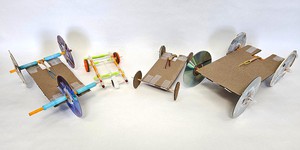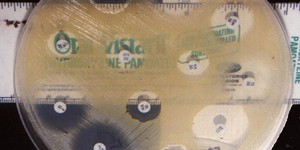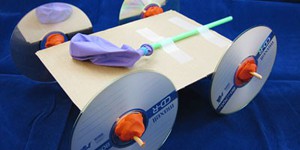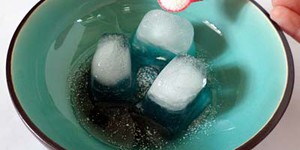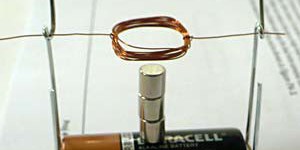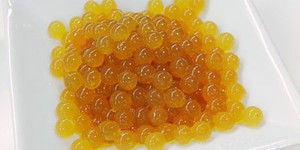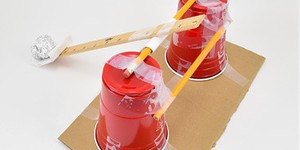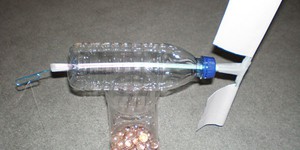Middle School Science Projects (915 results)
Science Buddies' middle school science projects are the perfect way for middle school students to have fun exploring science, technology, engineering, and math (STEM). Our middle school projects are written and tested by scientists and are specifically created for use by students in the middle school grades. Students can choose to follow the science experiment as written or put their own spin on the project.
For a personalized list of science projects, middle schoolers can use the Science Buddies Topic Selection Wizard. The wizard asks students to respond to a series of simple statements and then uses their answers to recommend age-appropriate projects that fit their interests.
|
Select a resource
Sort by
|
In this engineering challenge, you will build a car powered by nothing but a rubber band. The farther the car goes, and the fewer materials you use to build it, the higher your score. Enter your score in the 2024 Science Buddies Engineering Challenge for a chance to win prizes! Teachers, lesson plan versions of this challenge are also available.
Read more
Featured
Have you heard that garlic powder is supposed to inhibit the growth of bacteria? Which do you think would make a better disinfectant: a solution of garlic powder or a solution of bleach? This project shows you a straightforward way to compare the effectiveness of different disinfectants (or other antimicrobial agents), by measuring zones of inhibition on a culture plate.
Read more
Do you think you could build a car powered by nothing but air? A balloon-powered car is pushed forward by air escaping from a balloon, and it is fun and easy to build with materials you already have around your house. Can you imagine how you would want your own balloon-powered car to look? Can you design a car that will travel as far as possible? You can even measure your car's speed using your smartphone and a special sensor app. Get ready to grab some simple supplies to bring your idea to…
Read more
New
Artificial intelligence (AI) programs can now generate photorealistic pictures of people who do not exist in the real world. How can you tell if a picture is of a real person or a fake, AI-generated person? What features of the picture do people use to decide whether the face is real or AI-generated? In this project, you will explore these questions as you ask volunteers to look at both real and AI-generated pictures of human faces.
Read more
If you live in a place that gets cold in the winter, you have probably seen trucks out spreading a mixture of sand and salt on the streets after a snowfall to help de-ice the road. Have you ever wondered how this works? This basic chemistry project can give you some clues.
Read more
When you think of a motor, you may immediately think of a car, but you actually encounter other motors in your home every day. That's right, if you put on clean clothes from the washing machine, ate food from the fridge, or used a fan, you used an electric motor. In this electronics science project, you will make a simple electric motor with two magnets that "talk" to each other. As they interact, they will alternate between "liking" each other (pulling together), and "disliking" each other…
Read more
Forget drinking your juice. Instead, try snacking on it! Use the steps and recipes in this food science project to transform drinks into semi-solid balls that pop in your mouth. The technique is called spherification and it is part of a larger food science trend called molecular gastronomy— but we just call it yummy science!
Read more
New
Drones are small, fast, and maneuverable - this can make them very hard to knock down! Check out this Mark Rober video where he explores both how professional defense companies and some backyard YouTube engineers tackle the problem of knocking drones out of the sky. Can you take this engineering challenge on yourself? What methods can you devise to take down a drone? Which one works the best?
Drones can be expensive, and you probably do not want to risk damaging a $1,000 drone for your science…
Read more
Try your hand at this engineering challenge. Can you build a "launcher" device to launch a ball as far as possible and a "receiver" to catch it? Building a receiver provides an extra twist to a traditional catapult project. Add to the challenge by using a limited set of materials to build your machine and calculate a score based on your throw distance and materials used.
Read more
Alternative energy sources are a big deal these days. One such source is the wind. Find out how a wind turbine can use the power of the wind to generate energy in this science fair engineering project. You'll design various blades to find out which produces the most energy, and put the wind to work for you!
Read more
Imagine telling your friends about your latest science project: using a battery to make a light turn on. You might get some blank stares...sounds a little boring and basic, right? Now tell them you will do it with a potato! Yes, you can actually use fruits and vegetables as part of an electric power source! Batteries power many things around you, including cell phones, wireless video game controllers, and smoke detectors. In this science project, you will learn about the basics of battery…
Read more
Have you ever had a refreshing bath using a bath bomb? A bath bomb is several ingredients mixed and molded into a shape, which becomes fizzy when it touches the water. It can be quite a relaxing experience, especially if your bath bomb has a nice fragrance or includes some bath salts. The fizz is the result of a chemical reaction taking place between different ingredients within the bath bomb. In this science project, you will get to make your own homemade bath bombs and explore how changing…
Read more
Do you filter your tap water before drinking? Many commercials claim these filters make your drinking water cleaner and safer. But what, exactly, are these filters doing and is the water really cleaner afterwards? The cleaning power comes from their filling material, called activated carbon. It exists in all kind of forms: powder, granules, foams, and blocks. Do you think it matters what type of activated carbon is inside the filter? In this activity you will investigate whether larger or…
Read more
|
Explore Our Science Videos
Science Buddies: Pilobolus Spore Sac Launch
Marble Machine: 2016 Engineering Challenge
Follow the Flow: 2017 Engineering Challenge



